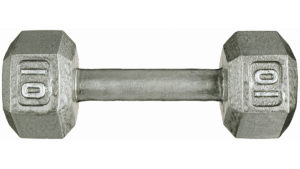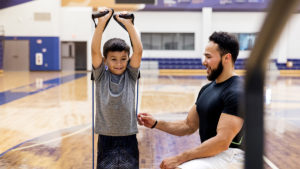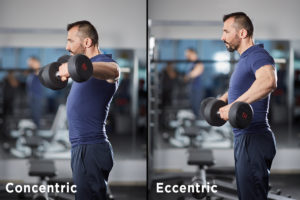Strength/Resistance
Health and Fitness Benefits of Performing Aerobic and Resistance Training
You need both aerobic and resistance exercise. But can doing both in one workout cancel out the benefits? Learn the best way to combine them!
Cardio and Strength Training Reduces Heart Disease Risks
Here’s more evidence to encourage clients to mix cardio and strength training in their program for health benefits.
Body-Weight HIIT Exercise
Combining these modes of training to create a body-weight HIIT exercise program has proven benefits we’ll explore below.
Glutes, Glutes and More Glutes!
This article discusses the role of the glutes in normal function, defines its architecture, and presents several training techniques.
Keep the Lean Body Mass
Researchers found that higher volumes of resistance training with lower loads were better for female athletes for preserving lean body mass.
Is Rating of Perceived Exertion Effective for Program Design?
Are you using the rating of perceived exertion (RPE) during strength training sessions with clients? If not, you may want to try it.
Strength Training for Youth
If you train kids, are you including youth strength training? Researchers share evidence-based benefits of training as early as age 5–7.
The Ultimate Guide to Resistance Training Techniques
This article will highlight 10 advanced resistance training techniques that improve muscular fitness, strength and mass.
Immunity: A Trend Worth Supporting
While it may not be getting the same COVID-19 notoriety as the word “pivot,” “immunity” has a spine—and it’s much more than just a keyword.
Sample Exercises: Deadlifts and Deadshifts
Look for ways to add these sample deadlifts and deadshifts to your training programs. Your body, your clients and your baby will thank you.
Power Training for Older Clients
Power training for your active agers can be a vital part of programming. By helping your clients maintain speed, you will do them the service of training them for the sport of life.
Complex Training Workout for Athletes
To make the most of athletic training, take a look at complex training, which combines strength training with plyometric drills.
Arthritis and Exercise
Arthritis is a major health concern. According to the Centers for Disease Control and Prevention, 23% of all adults in the U.S., more than 54 million people, have arthritis. As a fitness professional, you can make a difference. Both the CDC and the Arthritis Foundation (arthritis.org) agree that exercise is an important tool in arthritis pain management and prevention.
Posture Correction for Static Damage
The word posture tends to evoke the image of a schoolgirl standing perfectly erect with a book on her head. More accurately, static posture refers to the way in which a person holds his or her body or assumes certain positions, such as sitting, standing or sleeping. The cumulative effect of the time spent in certain positions can lead to prolonged static-posture damage to both the musculoskeletal and myofascial systems of the body.
Types of Periodization Training
Researchers have focused on three types of periodization training: linear periodization, block periodization and undulating periodization.
The Top 10 Corrective Exercises
How does corrective exercise programming fit into your business? Clients who are self-motivated to work hard are already star pupils. But what do you do when a client, because of injury, overuse patterns or some other type of dysfunction, can’t quite make it out of the gate? Many people want and need help with reducing pain in addition to meeting functional fitness goals. One goal dovetails into the other.
Frozen Shoulder? Identify Dysfunction
Our clients work hard to develop shoulders that are aesthetically pleasing, and learning how to spot shoulder impingement and other dysfunction is an integral part of the big somatic “picture.”
Fit to Travel: Exercises for Seniors
Programming exercises for seniors is more important than ever, especially now that travel is opening up again, but your clients may not have kept up with their workouts over this last year. Here are some great ways to prepare your active agers for more adventure.
5 Eccentric-Training Controversies, Resolved
This column will review the results of several investigative studies on controversial topics related to eccentric training.
Not Training to Muscle Failure May Enhance Muscle Endurance
Researchers found that not performing repetitions to failure may be more effective at increasing muscle size and endurance in untrained individuals.



















